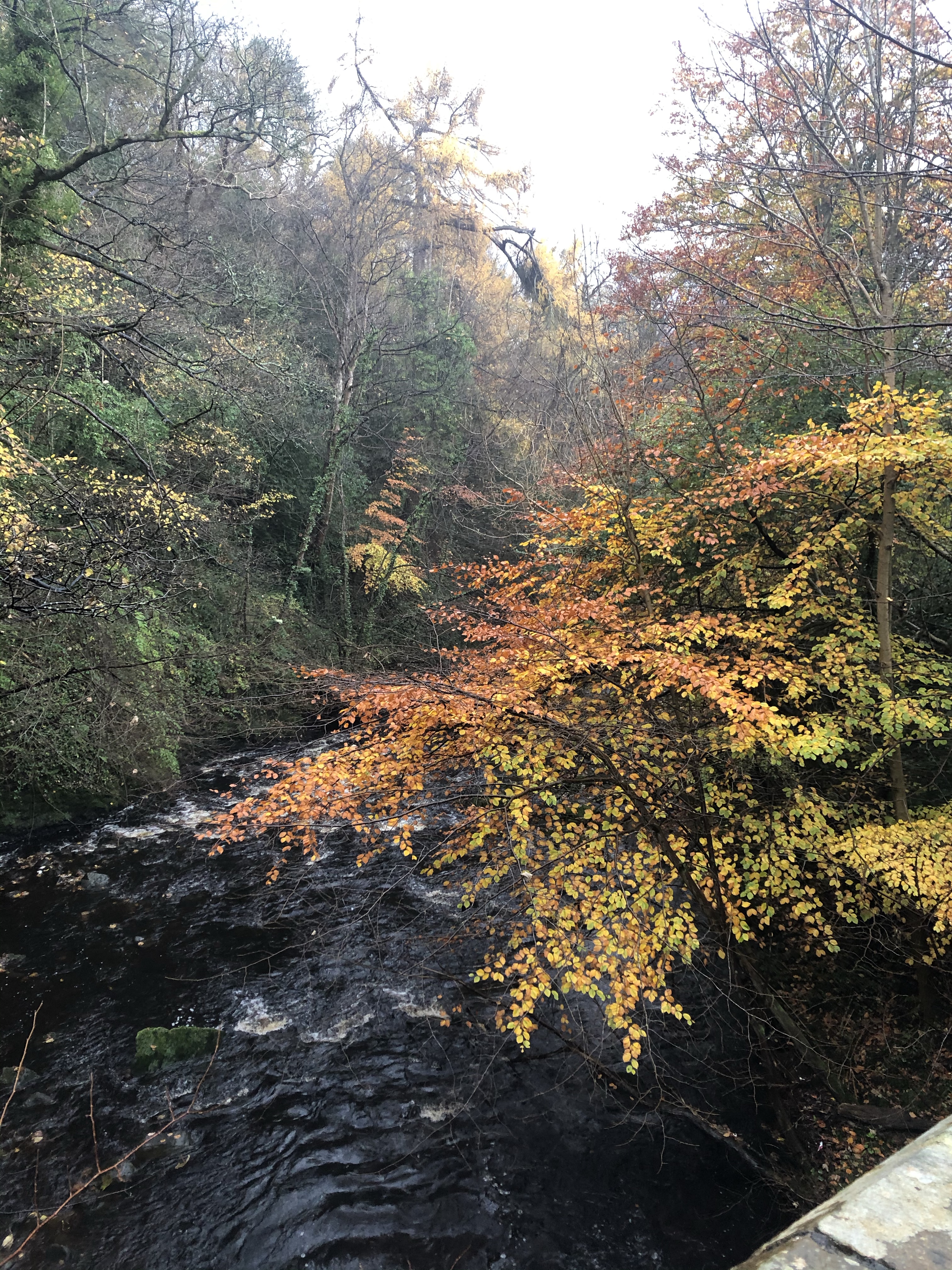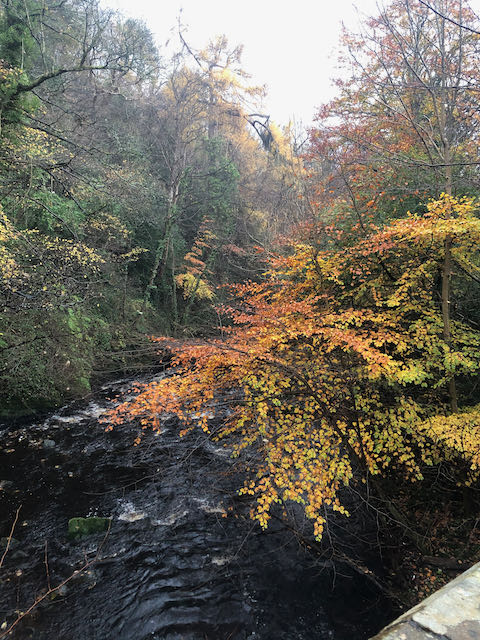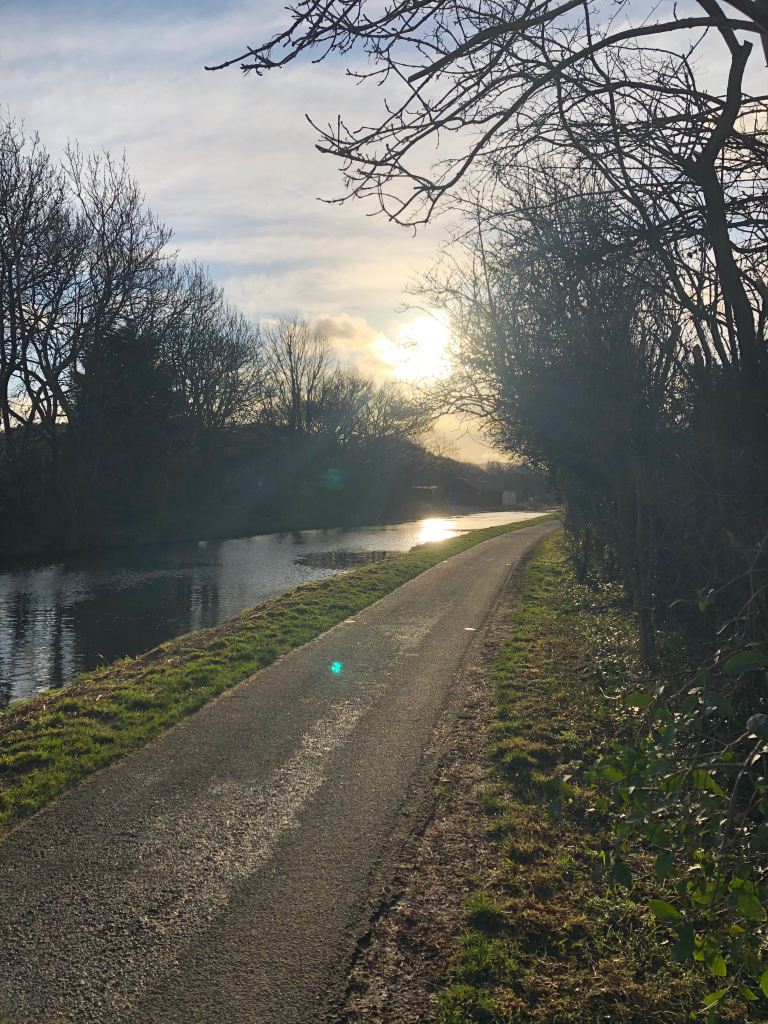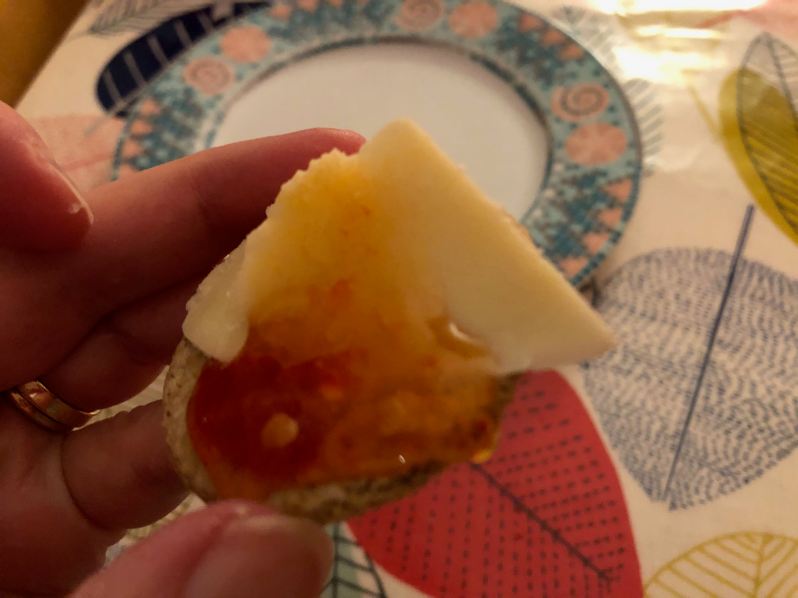
Tag: Edinburgh

Art inspired Edinburgh afternoon
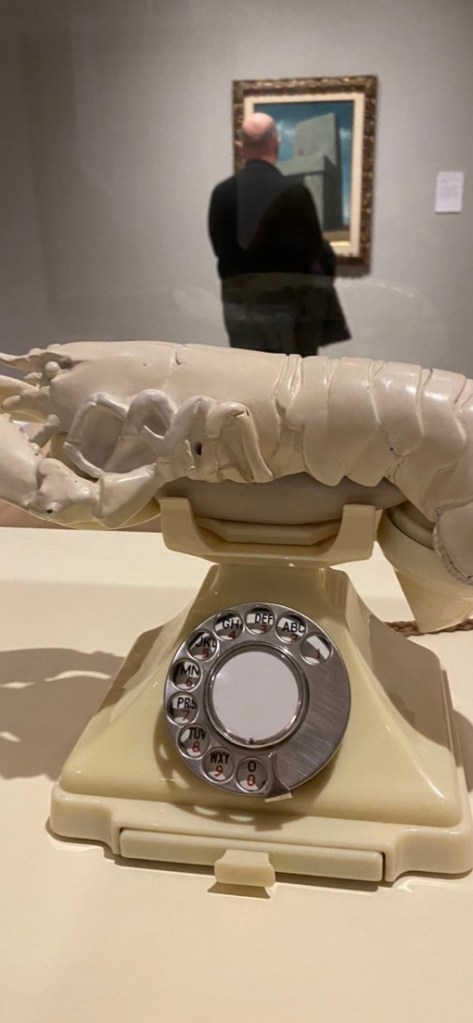
Saturday meander in Edinburgh and a chance to visit the Gallery of Modern Art. They had an exhibition of recent acquisitions.
Walked there after a short bus journey – and walked part way by the Water of Leith to see the Anthony Gormley statue in the river.
As always, very grateful to live in a city that is just the right size for exploration & with our over 60s free travel even bad weather can be avoided.
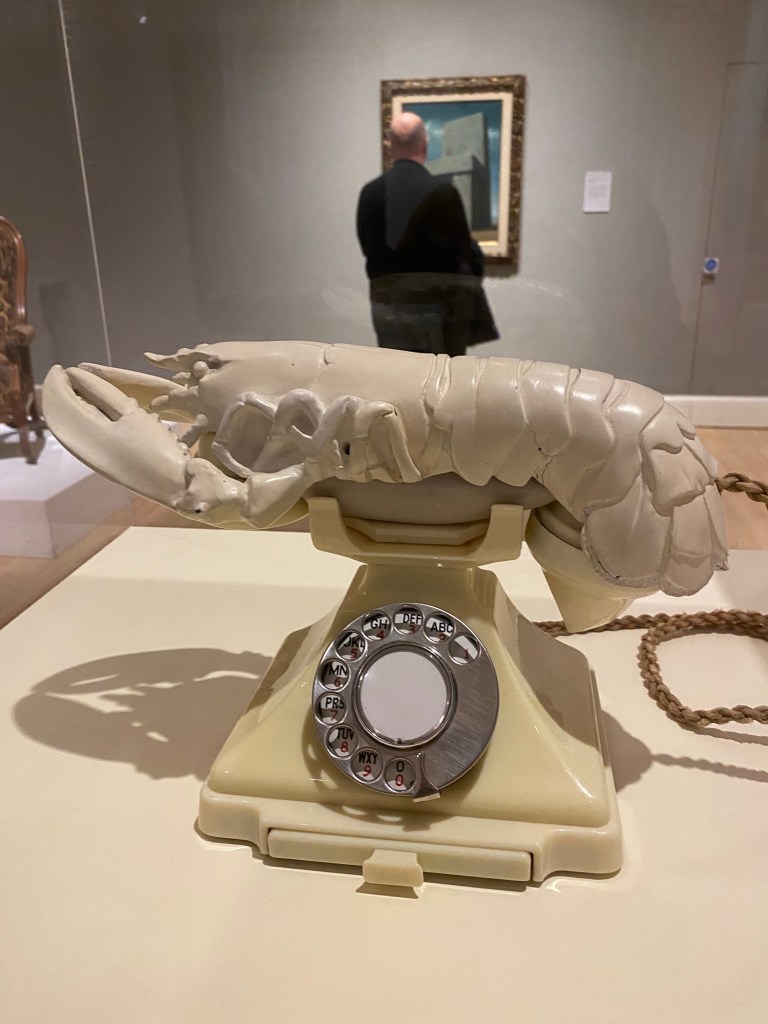

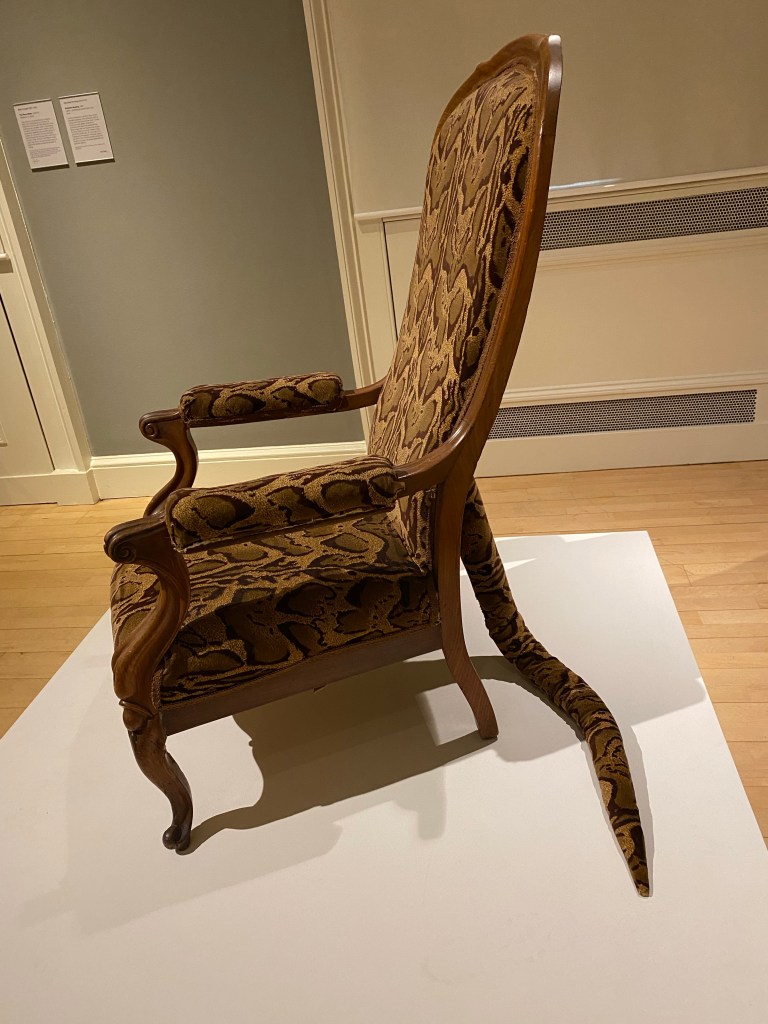
The quest for marmalade perfection
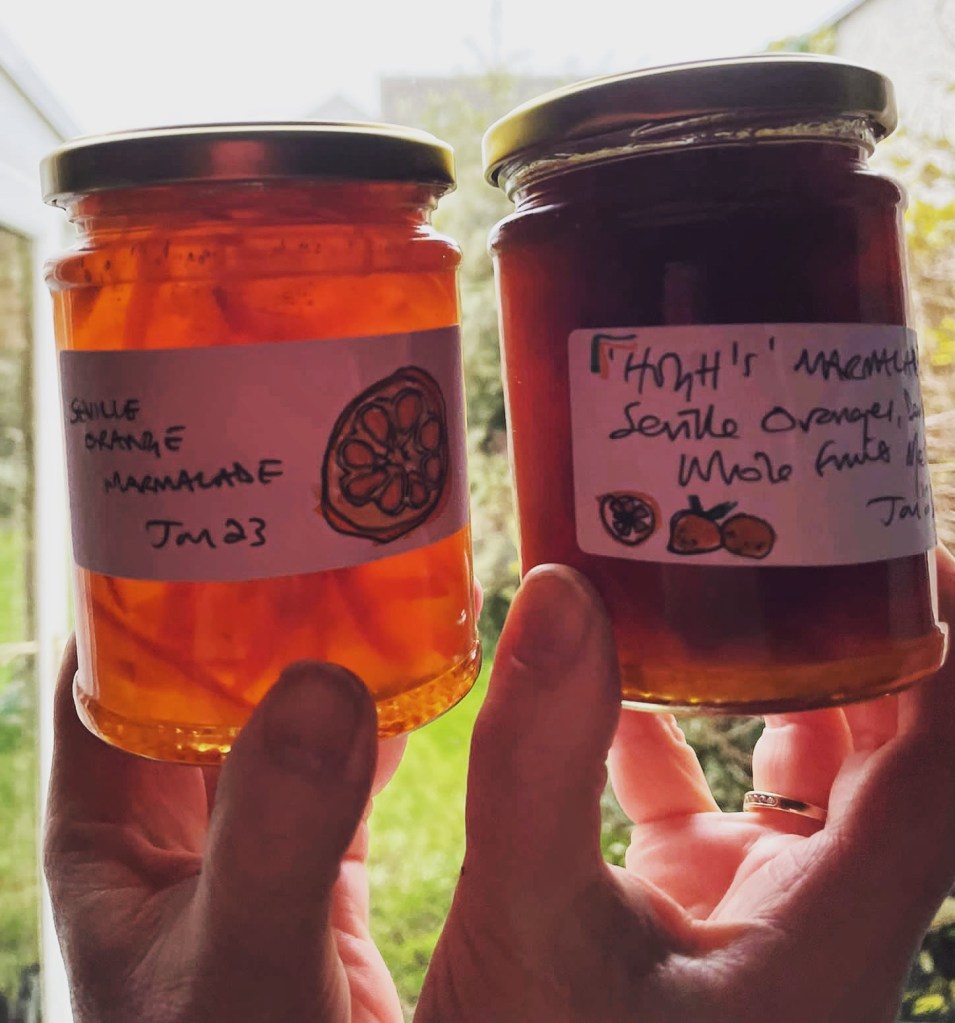
After the sparkle and joy of December, January can be a bit of a drag. Edinburgh is a lovely city but January is still winter and daylight is in short supply. Added to that, my self-imposed New Year quest for health improvement and renewal can, all told, make it a month to endure or thole * rather than relish.

Enter marmalade making and its orange radiance to bring some sunshine.

January is traditionally marmalade month coinciding with the arrival from Spain of the bitter Seville oranges that make the best marmalade. You can make marmalade all year round using tins of pre-prepared fruit, or as I optimistically planned last year, by freezing the time-limited Seville oranges to use at a later date. But it’s the arrival of the fresh fruit from Spain into a grey January that really starts the buzz amongst marmalade aficionados.
When I first started marmalade making a few years back – my attempts could best be described as inconsistent. The end result usually tasted ok but often did not set ( marmalade sauce anyone ? ), and when it did set, the peel all stayed at the top and did not have the desired even peel distribution. So during Covid times, when others were mastering new languages or learning to crochet a blanket, I made it my mission to crack the marmalade code and achieve preserve perfection.
I bought several books on the subject (including unintentionally, one written in French), and a special thermometer to check for a set, and continued making marmalade and other jams with mixed results. Although the taste was usually good – it was hit or miss when it came to setting and achieving the right consistency still proved elusive.
Success only came when I was given some very useful advice from an expert preserves maker, Jaki at Perfectly Preserved. A conversation with Jaki via Instagram helped me to understand where I had been going wrong and she gave me some great advice.

Jaki helped me to understand the importance of watching the shape of the bubbles and how they change as the marmalade reaches the setting point. I would highly recommend following Jaki’s Instagram ( @perfectlypreserved ) for an easy-to-follow ‘how-to’ guide to making marmalade, or if you have no desire to make your own – her delicious marmalade and other tasty preserves including her amazing rhubarb are available to buy online here
Following these top tips, my marmalade started to look better and set nicely, and then later and again via an Instagram chum, I came across a marmalade master class by Vivien Lloyd. Vivien is another marmalade expert, her book First Preserves is an excellent guide with clear step-by-step instructions, and she has been a judge at the World Marmalade Awards so I was hoping for some insider knowledge.
At her zoom masterclass, she demonstrated her fail-safe approach to successfully making marmalade in small batches and was very generous in sharing her expertise, including for me busting the myth and mystery of testing for a set!

Encouraged by my new found confidence in bubble recognition thanks to Jaki, and with Vivien’s top tips front of mind, I made a batch where the set was just right, the peel was evenly distributed AND it tasted delicious.
Encouraged by this – I thought I might enter the World Marmalade Awards and so in January 2022 – I parcelled up my chosen jar and posted it off to Dalemain in Cumbria more in hope than expectation.
Months passed and I had mostly forgotten about the competition- there is a long interval between submitting your entry and getting your result. I had seen lots of pictures of the judging earlier in the year but as I had heard nothing assumed I had been unsuccessful. Wind forward to June 2022 ( 5 months after my submission ) and I was surprised and delighted to receive a certificate in the post with a silver award. Yippee!

Limbering up – marmalade two ways
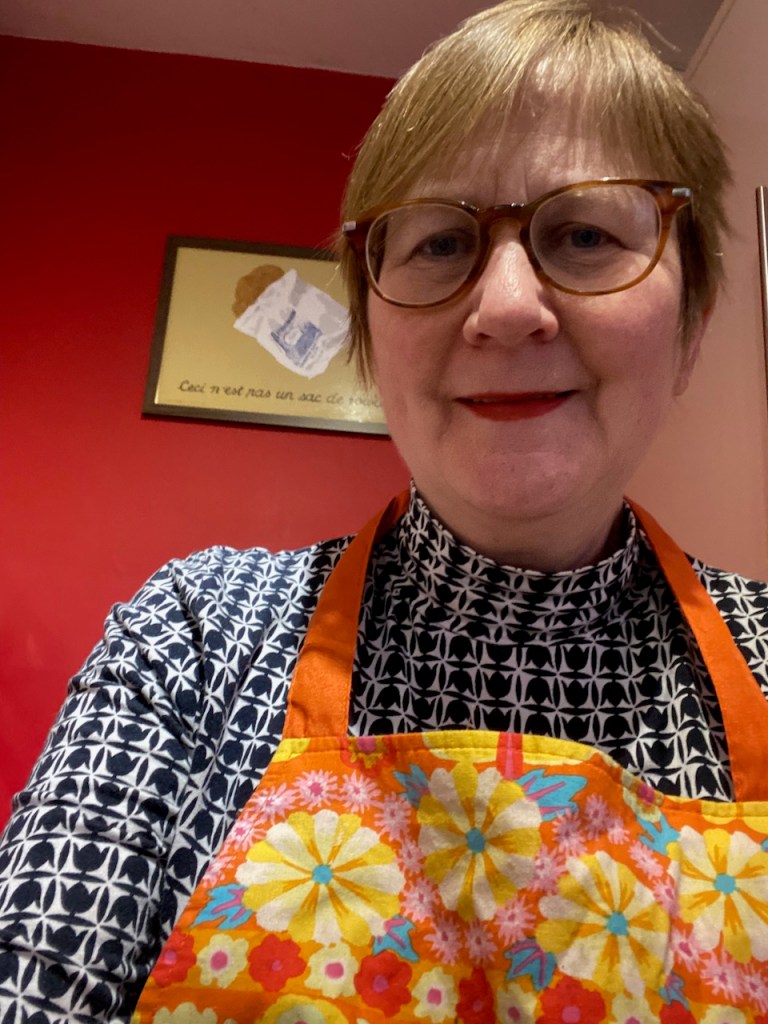
Encouraged by my success, I am contemplating entering the World Marmalade competition again this year, but feel more nervous – reckoning beginner’s luck won’t be repeated and as is my way – I am now overthinking my marmalade making.
When I was in peak marmalade-making frenzy – and buying up Seville oranges beyond my needs – I froze some of them thinking I would make marmalade in the summer – or maybe a second attempt at making Diana Henry’s Seville orange tart, (a true Labour of love I had made once before with regular oranges). This time I could use the real McCoy.
As it turned out my summer was spent making a wedding cake for my daughter and as our stocks of marmalade were nowhere near depleted, the frozen Seville oranges rattled about in the freezer taking up space until the other day when it occurred to me I could use them to make a test batch of marmalade before attempting my entry for the awards.
By way of limbering up my marmalade-making muscles – and using the aforementioned frozen Seville oranges, I made two different types of marmalade. The first I made following the whole fruit method and demerara sugar ( Hugh’s marmalade recipe from Pam the Jam ) and for the other, I broadly followed my previous year’s award-winning recipe where you juice the fruit, shred the peel, then soak it overnight before cooking the next day and using white cane sugar.



Both marmalades turned out very well but were quite different. The whole fruit recipe using demerara sugar and a thicker cut of peel is darker and has a more robust flavour. I think this is sometimes called Oxford style. In some ways, it is easier to make because the peel is softer to cut when cooked and the flavour is good, but I enjoy the meditative process of juicing fruit and slicing the peel before soaking overnight or longer.
Overall I prefer the marmalade made by the soaking method – it is fresher and has a more lemony taste which is more to my liking and I think it looks prettier.

Using the frozen Seville oranges did not make much difference to the recipe I followed. I read afterwards that freezing can reduce the level of pectin and more fruit or lemon juice should be added to help achieve a set – but I did not change anything.
I noticed that with the frozen fruit – the peel took a bit longer to soften using the whole fruit method and the peel was not as bouncy when I was cutting the peel for those I made using the overnight soak-and the end result was fine.
I don’t think either of these test batches is good enough to enter the competition, but making them was a useful trial run before I attempt my ( fingers crossed ) award-winning entry.

On doing new things

This weekend I made a Tik Tok and drank a Negroni and both of these were firsts for me, or strictly speaking the Negroni was a first time enjoying a properly made Negroni at home – surprised it has taken me so long to embrace this cocktail du jour.
These accidental firsts are not part of an active quest to do new things or me ticking off a bucket list, more a reflection of my butterfly mind and a preference to hop, skip, and jump to the new to avoid doing all the boring old stuff I need to deal with.
Wind back to a couple of weeks ago when the sun was shining in Edinburgh & inspired more by optimism than the reality I bought a couple of cute tins of ready-made Negroni – thinking to enjoy these outdoors as a pre fish supper aperitif. This story has, as many weather dependent stories do in Scotland, a rather muted conclusion when the clouds rolled in from the hills and the appeal of drinking or dining Alfresco evaporated.

Against the plummeting temperatures and grey skies,the tiny cute tin of Negroni was a ray of sunshine- the contents were delicious straight up and made a refreshing long drink with sparkling water added.
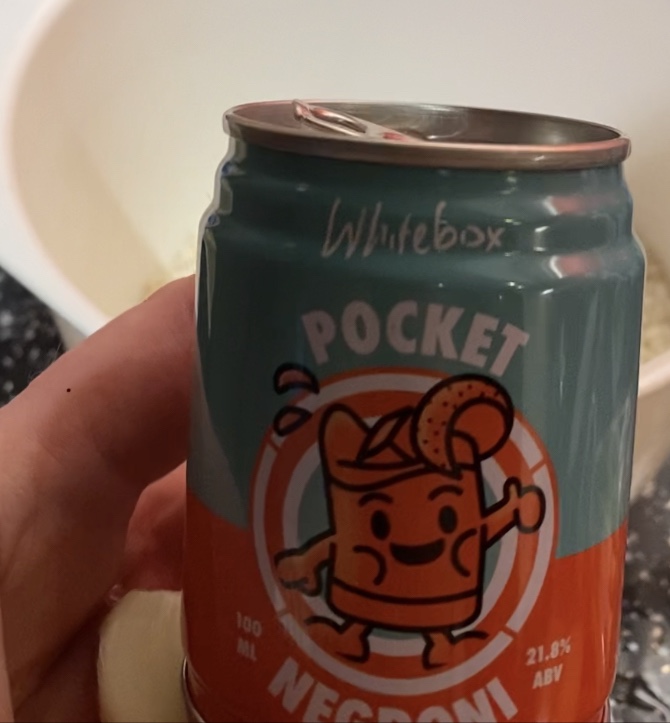
So this weekend with research made on the perfect serve ( Stanley Tucci food memoir – Taste My Life Through Food page 9 ) – and ingredients purchased, my husband was appointed barman /mixologist. He created a splendid Negroni even if we had a bit of an exchange of views over some of the finer details around the correct glass to use and whether it was over ice or without.
I am so late to the party on the Negroni front and is odd to have missed out on this joyous experience for so long – what was I thinking? Maybe I missed the cocktail memo or I was washing my hair or just not paying attention. Regardless of the reasons for the oversight I am now happy to raise a glass to this wonderful late discovery. ( and as a note of caution to myself and any new to this delicious cocktail – Negronis are deceptively strong ) 🥴
Cheers !
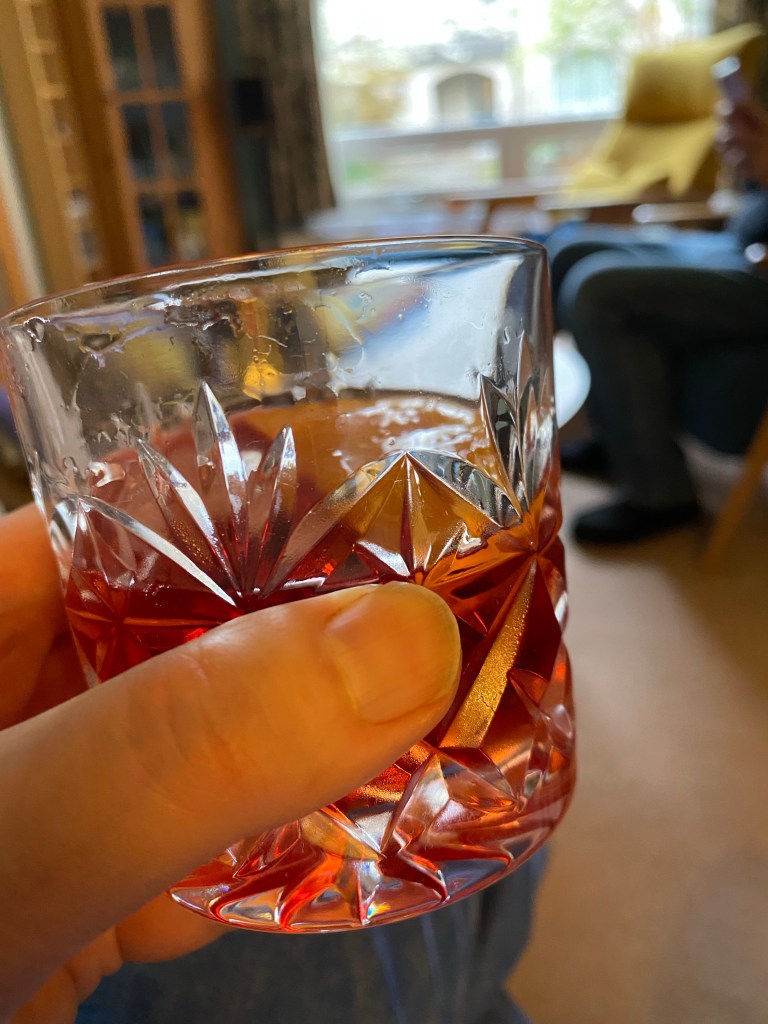
So to the Tik Tok – my daughter was home & so on hand to provide instruction and a steady hand for filming. Dinner was to be lamb with peas, onions and vermouth, a Diana Henry recipe from her book Simple (another first, trying this recipe) and I thought it a good subject for Tik Tok.

Now and again I make amateur recordings of the food I am cooking and post these on Instagram stories. My filming style might be generously described as ‘unpolished’ and the finished output depends on various factors including – how behind schedule I am, how many glasses of wine the cook has enjoyed ( I do channel my inner Keith Floyd ), and whether I am making the recipe for the first time. Readers – do remember to read the recipe all the way through.
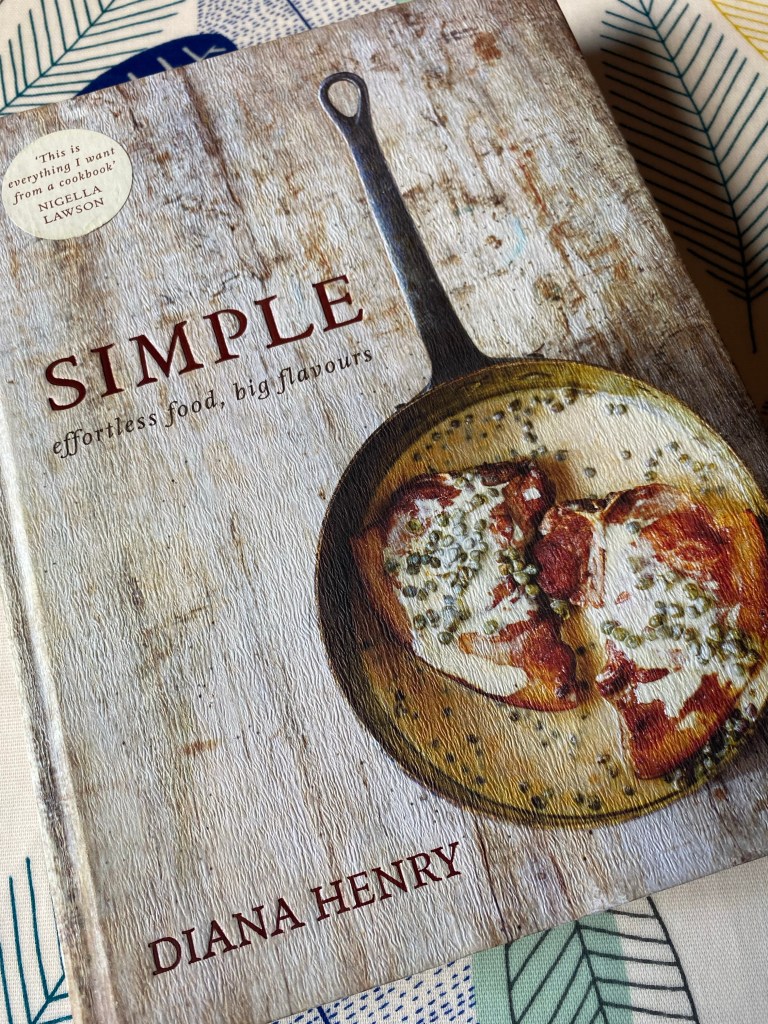
I have no specialist kit to speak of other than my phone and my husband is usually watching football so it’s usually a lone effort,without tripods or flattering lighting. I tend to film in between cooking & often miss lots of steps, and navigating the fine line between verisimilitude and burning dinner is quite the balancing act.
The end result is rarely a ‘how to’ guide, more a cook along and sharing.
My daughter Ellen who is almost a millennial and naturally a digital native, is at ease with phone technology, but more than that she has a really good eye for photography and infinite patience when working with her dear old Mum.
Ellen was both art director and videographer for Tik Tok number 1 – but she did give me small tasks to complete unaided – like choosing the music and cooking the lamb.
For a first attempt using some of the easier Tik Tok functions and effects,I was quite pleased with the finished film and it may have opened up a whole new set of distractions for me from the eternal unfinished ‘to do’ list.
The finished film is here👇
First run in a while
Contrary to the blog description, I have not been mostly talking about running, or to be more accurate I have not been talking about anything for quite a while- a full year since the last post.
Nor have I been running as often as I used to – so today I did both.
I went for a short run – saw an early yellow flower & thought I might as well break the writing drought.
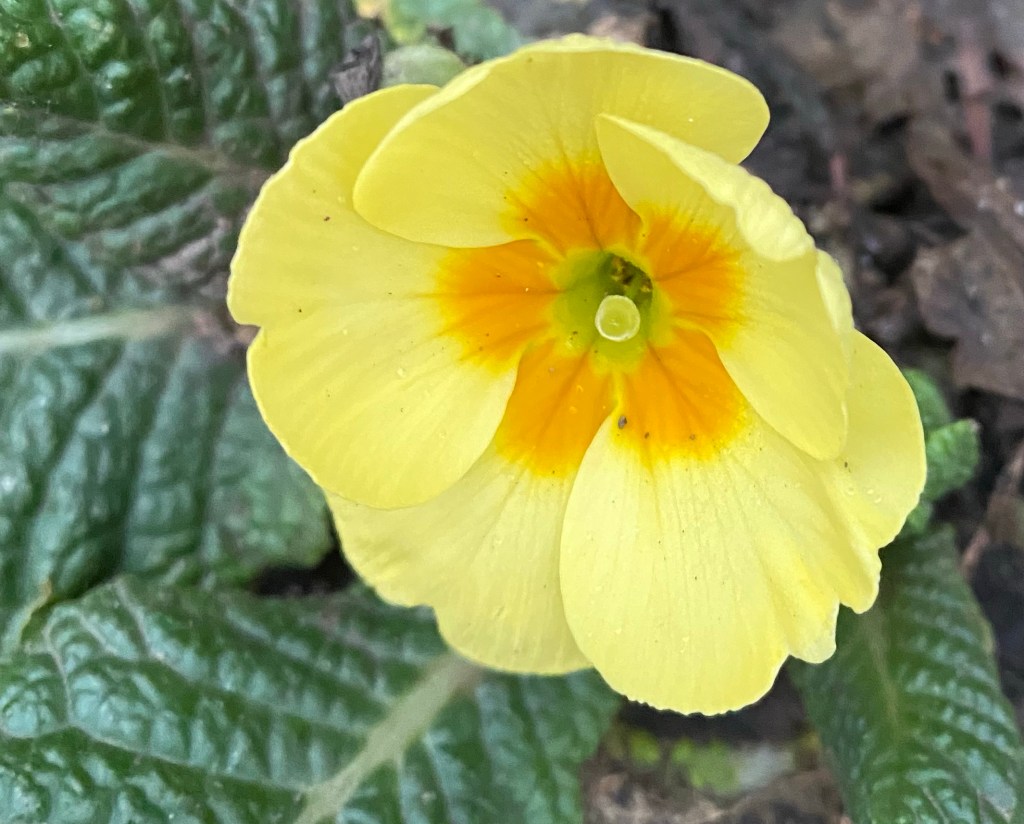
Running Groundhog Day
Three years ago I ran a marathon and 2 weeks ago I ran for 8 minutes as I embarked once more on the couch to 5k journey.
It’s running Groundhog Day on my quest to regain my fitness and be able to run like I used to pretty much every weekend for the past 10 years.
I used to run so often that even I was bored of my Facebook posts – yes, guilty as charged- I was that person who just had to share my post-run,endorphin filled euphoria with you, regardless of whether or not you might care.
But the past couple of years the wheels have kind of fallen off my running bus as a combination of injury, lack of opportunity then latterly recovery from surgery, meant my running mileage dwindled.
During lockdown after developing a serious case of runners envy – I acknowledged that if I wanted to get back into running I was going to have to start over.
So in June, like many others before me , I downloaded the Couch to 5 k running app and with the mellifluous tones of Jo Whiley guiding me I started to make progress .
All was well until week 7 run 2 when disaster struck and my knee gave up the ghost and I had to hobble home. So once more running was abandoned and as we were still in lockdown it was tricky to see a physio, so I had to put running on the back burner.
Wind forward to October and I was back at the gym – swimming but not doing much else and eventually made the effort to get an online consultation with a physio. He diagnosed my dodgy knee as a tendon problem – gave me some exercises and more importantly the ok to go back to running.
So after a few trial runs – I reset the app and started right back at the beginning.

Let’s see if I can make it to the week 9 finish this time.
Long time no see
Lockdown has not brought out the writer in me or the painter or the linguist or sadly the exerciser. Instead I have mostly sat metaphorically or otherwise paralysed like a rabbit in the headlights of an ‘unprecedented’ series of events.

I wonder how many others have found themselves observing the weirdness of a life paused while complying willingly to the rules of safety.
My lockdown life has been a gentle one of privilege and access to a garden and to online communications with family, to a job not furloughed and to a cupboard full of toilet rolls and wine, but I have still felt a sense of loss.
I have not had a direct experience of the impact of Covid -19 on a loved one so I appreciate my loss is small by comparison to those experienced by many. But I have missed the easy interaction of city life, a trip on a bus to a cafe or pub, and those tiny observations of others that reminds us of humanity.
While others have found joy in birdsong – I miss the noisy clatter of messy lives.


tiny little numbers
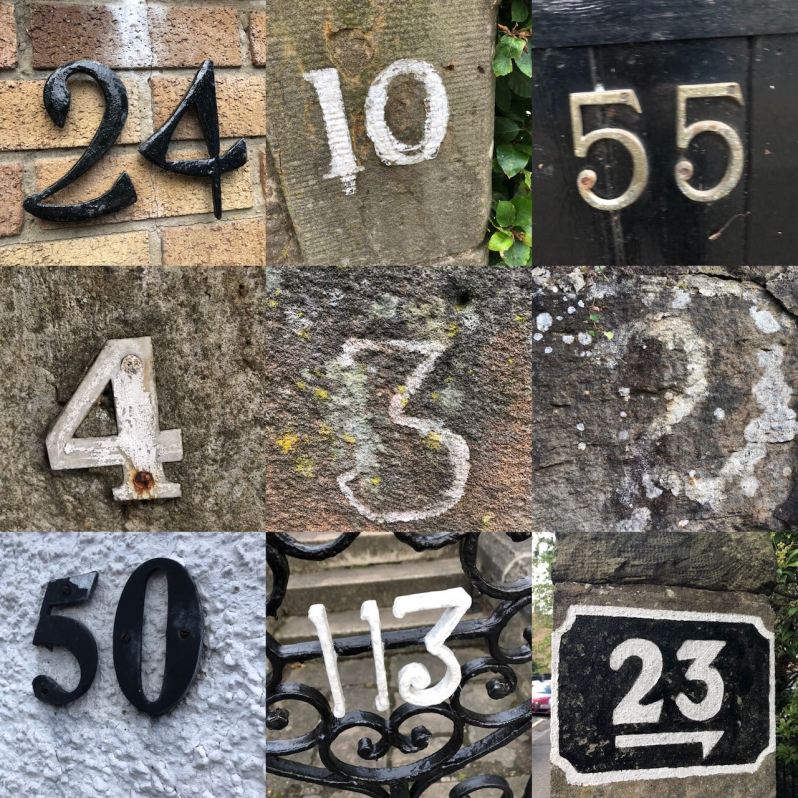
I can’t quite remember when I started taking pictures of numbers, but I love typography and commercial art and perhaps an interest in these tiny artworks is a by-product of that.
I don’t have any rules as to what constitutes a ‘good’ number – it’s very subjective and there is no formula – it just depends on what tickles my fancy 😉
It might be a carefully painted number in gold leaf above a door, or brass numbers screwed on a bit squint. I love a weathered number on a stone gatepost – but am equally fond of a 70s style ‘stick-on’ decal against a garish painted door.
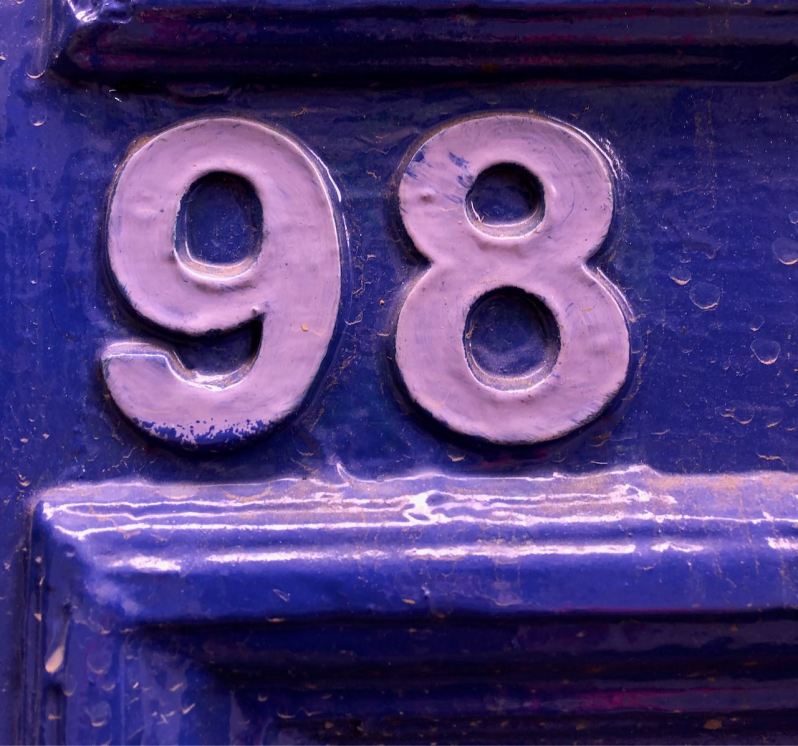
On doors and gateposts, these tiny numbers sit sentry both welcoming and protecting and while houses are extended and reconfigured over the years – often the house number remains unchanged. Sometimes I wonder about what lives the number may have witnessed, and the tales it might tell, if only numbers could talk.
Some numbers seem to have more of a personality than others – cheeky, austere, whimsical, stalwart and for those, I pen a short caption by way of description.

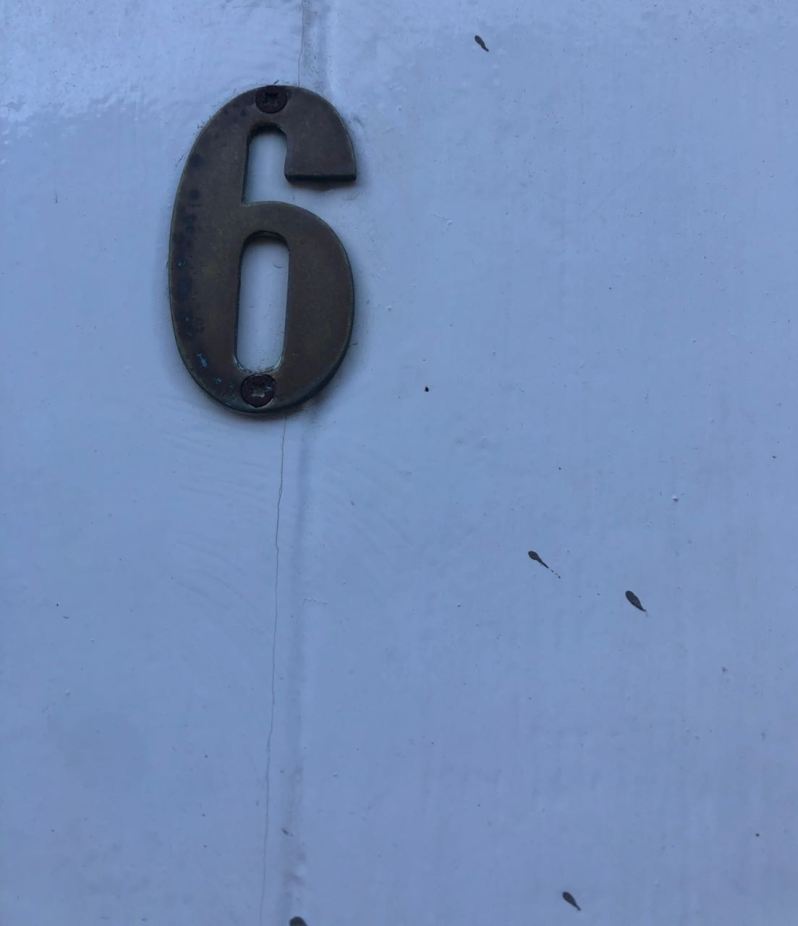

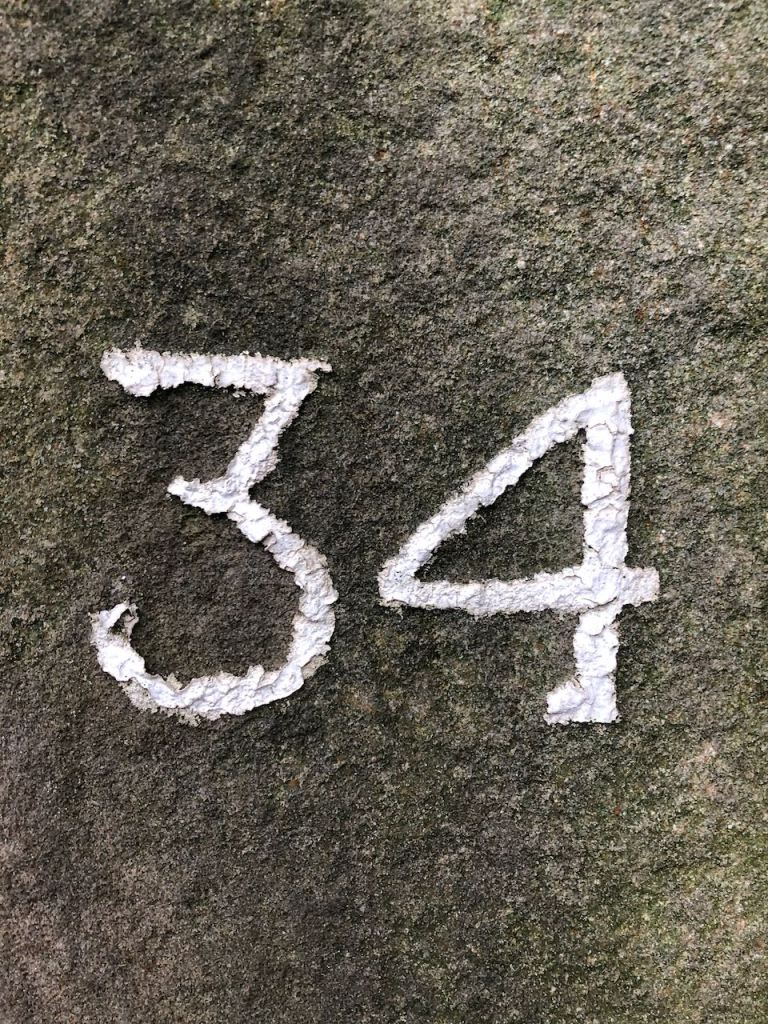


This is entirely my own interpretation of the number persona and others may not see the cheeky insouciance I see – or the flirty nature of a particular digit as I do. My tendency to anthropomorphise numbers does often depend on the mood I am in when snapping.
Other numbers need no description and their beauty is in the eye of the beholder.
When I was training for a marathon a few years ago, like a trainspotter, I had a notion to collect a full set of numbers 1- 26, but I soon gave up on this when my eye was more often drawn to 2s and 3s and 5s – and never finding a 26 or 14 that made the cut.
As a hobby, it suits me to be free to take pictures of those numbers that appeal and so my collection of number pics will always have doubles and triples and omissions as there will always be some that for whatever reason I just don’t like.
As a photographic subject, it is one of almost infinite possibilities – the world is full of numbers and I am happy to just keep surreptitiously snapping as I encounter those that catch my eye.
New year, same me and the search for jam perfection.
January is often the month of new beginnings and great intentions, a time to set a course of action for the next 12 months, to make resolutions, set goals and as December fades into the distance set forth into the new year with gusto.
I do see the start of a new year as a time to review and reflect. I don’t make resolutions as such but I usually think of a few ‘goals’ or things the old me might like to achieve in the next 12 months.
This loose collection of paths to self-improvement might include some new activities to try in the coming year and will always include an optimistic commitment to trying to get better at some of the things I do already.
Practice makes perfect and all that.
Getting back into writing regularly is on my list, having pretty much kicked this blog into the long grass in the past year. I have got out of the habit, and now my writing is reduced to social media posts, work emails, and the odd business report.
Aside from an intention to keep writing, following on from a recent batch of marmalade making – next on my list is a quest to get better at making jam- not with a view to becoming a professional preserver, but more to crack the elusive nut of getting my jam to set.
On paper, making jam and marmalade is an easy process – you combine the right ratio of fruit, sugar and sometimes water, heat it to the temperature of jam setting point then Ta Da! It sounds simple, but while my jams and marmalade usually taste good, they are often very runny and the process of knowing when it has reached setting point is a bit of a mystery.
Some of this is a fear of the pan boiling over – and so to avoid this, I don’t have the temperature high enough – or when it is boiling a fear of letting it boil too long in case it overcooks,( having once made blackberry jam that was like industrial strength glue).
Recipe books offer instructions and guidance, but rarely give much detail around timings. I suppose it is because as with most cooking, there are unknown variables relating to your own kitchen and equipment so success comes through trial and error and accumulated knowledge.
Apparently, there is a magical knack of knowing when the bubbles in the pan have changed – and recognising this I imagine only comes with practice.
As I only tend to make jam or marmalade once or twice a year – reading the jam bubble runes is a skill not yet mastered. This year I had to reboil marmalade when after cooling it still looked more like orange soup than a breakfast conserve. So after that near disaster, I bought myself a jam pan and a thermometer.
Today I gave my new pan and thermometer combo a test drive – making scarlet chilli and red pepper jam, a recipe from Diana Henry’s book Salt, Sugar Smoke. Intrigued by the prospect of making the evocatively named scarlet jam, I set forth on a new path in my preserving journey – as I have never made jam with peppers or attempted any kind of savoury relish before.
It was an easy recipe to follow, with only a few ingredients and it looked beautiful bubbling in the pan as the peppers and chilli transformed from raw ingredients to jam.
As always it took longer than I expected for it to reach setting point, but this time I persevered, even letting it rise above the mystical 104.5 C. Using both my thermometer and the wrinkle test as guidance I studied the bubbles, stared into the glossy pot and followed my instinct 😉
I don’t imagine I will ever win any jam making contests – but it tastes good and looks like it will set.
Bravo to me !
Accidental Edinburgh Fringe ‘Greek’ yogurt
Last week I took a notion to make yogurt.
I was prompted in part by reading Tom Hunt’s Waste not column in Feast in the Saturday Guardian.

Each week in the Feast food supplement, Tom Hunt highlights various ways to reduce waste in the kitchen focusing on a different ingredient each week. This week it was chillies.
To make the most of chilli waste, you can save discarded seeds and dry them to season other dishes, and in something of a revelation to me, it turns out that the green stalks of chillies contain the beneficial bacteria lactobacillus and can be used instead of a starter to make yogurt.

I had chillies that I was using to make Menemen ( Turkish egg dish) for brunch and lots of milk – so was looking forward to trying out this eco tip.
So far so good – except I had not read to the end of the recipe – where I noticed it asks for 10-15 chilli stalks.
While I do like my Turkish style eggs spicy – 10 chillies is a bit too spicy !
Having decided to make yogurt I did a quick trawl of the internet for yogurt recipes – more by way of a reminder of quantities, as I have made yogurt in the past.
In my teenage years, I went through a phase of making soft cheese ( crowdie) and yogurt. I would like to say I was ahead of the artisan foodie curve but probably closer to the truth is that I lived on a farm in a small Highland village & was just a bit of an oddball.
Making yogurt is not complicated – and sometimes can happen by accident as I found out when I left a carton of milk on the windowsill of a Premier Inn hotel room on a business trip a while back. Reader – I ate it.

So back to my yogurt making – having gleaned the essential facts from the internet and reminded myself of the steps and quantities – this is what I did.
1. Gently heated up a pint of full-fat milk.
2. Left milk to cool to the temperature of a hot bath ( 45 degrees C )
3. I then took a couple of tablespoonfuls of Greek yogurt – from an existing tub, to use as the starter.
4. To warm the starter, I mixed a couple of tablespoons of the warmed milk into the Greek yogurt to make it runny and less cold before adding it back into the rest of the warmed milk.
5. I used my slow cooker to heat up the stoneware container so that the mixture went into something warm. If you don’t have a slow cooker – the important thing is to put the mixture into something that can retain heat – a thermos or just a sealed container than will keep the temperature even.
6. Having warmed the container – I put the yogurt ( that I had warmed a bit) into the warm milk then put the starter + milk mixture into the warmed slow cooker pot.
7. I switched the slow cooker off and took the stoneware container up to a warm room where I covered it in a thick blanket and left it for a few hours.
About 5 hours later it was well on the way to becoming yogurt but I decided to leave it overnight.
The next morning TA DA !
Yogurt
It tasted ok – quite mild, but I thought it was a bit runny and as I eat a lot of Greek yogurt I thought I would try straining it to see how it turned out.
I put the yogurt into a muslin lined sieve over a bowl and left it to drip in its own time.

I was heading out to a show at the Edinburgh book festival so I just left it dripping.

We ended up staying out later than planned and going to some more stuff at the Fringe so the yogurt had been doing its dripping thing for about 9 hours by the time we got back.
The result was a small ball of thick yogurt – maybe closer to fromage blanc than Greek yogurt in texture – but with a lovely mild flavour.
As I don’t have any pigs I drank the leftover whey – the strained liquid. No idea if it’s good for you but it was a refreshing slightly tart drink.
To make the yogurt a bit creamier I added back in a couple of spoons of full fat milk and the end result was quite close to the shop bought varieties.


It’s a fairly easy thing to do. I don’t think it gives any better result than buying a tub, but it’s quite satisfying making your own.
I might experiment with different types of milk ( e.g. Jersey or unhomogenised ) and also the length of time I strain it to see if that makes a difference to the end result.
Meanwhile, I have started saving my chilli tops in the freezer ( which I hope does not destroy the lactobacillus) and when I reach 15 I will give the chilli yogurt a whirl.
